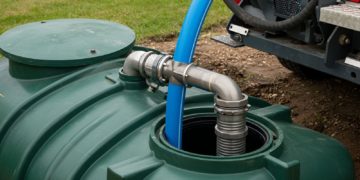When considering the placement of solar farms, choosing the “right spot” involves more than just open land. You need to account for factors like solar irradiance, flat terrain, and proximity to transmission lines. Soil quality and environmental impact can’t be ignored either, as they affect both efficiency and sustainability. Don’t forget economic factors; a site might seem perfect, but if it’s financially unfeasible, it won’t work. So, how do you balance all these elements to maximize both output and sustainability? Let’s explore the criteria that make a location optimal for solar energy projects.
Land Assessment Criteria
When assessing a solar farm land requirements, you’ll need to consider factors such as solar irradiance, topography, and proximity to transmission lines to ensure optimal energy production.The quality of the soil plays a significant role in land assessment. High soil quality ensures stability for mounting structures, reducing risks related to soil erosion or subsidence. Conduct soil tests to determine its composition and compaction levels, as these can affect the installation and longevity of solar panels.
Land topography is another critical criterion. Flat or gently sloping land minimizes the complexity and cost of installation. Steeper slopes may require extensive grading and reinforcement, increasing both time and expense. Analyze topographical maps and perform on-site surveys to gather precise data on elevation changes. This information will help you design an efficient layout for solar panel arrays. Proximity to transmission lines is vital to connect your solar farm to the grid. Shorter distances reduce transmission losses and lower infrastructure costs. So, if you are considering a solar lease deal, it can be important to assess whether your property can meet the required criteria for solar development. Using the right tools and platforms can help you find out if your land is suitable for solar development.
Ideal Locations
Choosing the ideal location for a solar farm hinges on a meticulous analysis of solar irradiance levels, land availability, and grid accessibility.
You’ll need to start by identifying regions with high solar irradiance, typically measured in kilowatt-hours per square meter per day (kWh/m²/day). Areas near the equator, such as deserts and other low-latitude regions, often provide optimal conditions due to their consistent sunlight exposure and minimal cloud cover.
Next, consider the geographical features of the land. Flat, open areas reduce the complexity and cost of installation, while avoiding regions with high topographical variability can maximize the efficiency of solar panel placement. Large, contiguous plots of land are preferable as they allow for the scalable deployment of solar arrays.
Climate conditions also play a crucial role. Arid and semi-arid climates are ideal due to their low precipitation and minimal cloud cover, which ensures maximum solar energy capture. However, you should also account for extreme weather events that could potentially damage infrastructure.
Lastly, proximity to existing grid infrastructure is essential. Being close to substations and transmission lines reduces the cost and complexity of connecting your solar farm to the grid, ensuring efficient energy distribution.
Environmental Considerations
Assessing the environmental impact of a solar farm involves evaluating factors such as land use changes, local biodiversity, and water resource management. You’ll need to consider how converting land for solar panels affects local ecosystems. For instance, large solar farms can disrupt wildlife habitats, leading to potential declines in local species populations. Studies show that ground-mounted solar installations can fragment habitats, which is detrimental to wildlife. Mitigating this wildlife impact requires thoughtful site selection and design adjustments like preserving native vegetation corridors.
Water management is another critical aspect. Solar farms typically require minimal water compared to other energy sources, but construction and maintenance phases can still pose risks. For example, soil erosion and runoff during construction can degrade nearby water bodies. Implementing erosion control measures and maintaining proper drainage systems are essential to reduce adverse effects on water quality.
Additionally, you’ll have to assess the albedo effect, where the reflectivity of the solar panels can alter local temperature and precipitation patterns. Data-driven environmental impact assessments and ongoing monitoring can help minimize these risks. By addressing these environmental considerations, you can ensure that the solar farm operates sustainably and harmoniously within the local ecosystem.
Economic Factors
Evaluating the economic factors of a solar farm project involves analyzing costs such as initial capital expenditure, operational and maintenance expenses, and potential revenue streams from energy production and incentives.
To start, the initial capital expenditure covers the cost of purchasing and installing solar panels, inverters, and other essential infrastructure. These upfront costs can be substantial, but economies of scale often reduce per-unit costs for larger installations.
Operational and maintenance expenses are recurring costs that include monitoring system performance, cleaning panels, and replacing components over time. It’s crucial to factor in these long-term costs to ensure the project remains viable.
Lease agreements play a significant role in the economic viability of a solar farm. Leasing land can be more cost-effective than purchasing, particularly in areas with high property values. The terms of lease agreements, including duration and rental rates, directly impact your project’s financial health.
Additionally, property taxes must be considered. They vary by location and can significantly affect overall profitability. Some jurisdictions offer tax incentives or reductions for renewable energy projects, which can offset these costs.
Technological Advancements
Technological advancements in solar energy, such as bifacial panels and advanced tracking systems, significantly enhance the efficiency and output of solar farms. Bifacial panels, which capture sunlight on both sides, can increase panel efficiency by up to 30% compared to traditional single-sided panels. This advancement allows you to generate more electricity per unit area, effectively reducing the land required for the same energy output.
Additionally, advanced tracking systems play a crucial role in optimizing land use. Single-axis and dual-axis tracking systems follow the sun’s trajectory, maximizing solar exposure throughout the day. These systems can boost energy production by 15-25% for single-axis and up to 45% for dual-axis configurations. By improving the overall efficiency of your solar arrays, these tracking systems allow you to achieve higher energy yields without needing additional land.
Moreover, integrating these technologies can lead to more compact and efficient solar farm designs. For instance, combining bifacial panels with dual-axis tracking systems could result in a 50% increase in energy output per square meter. By leveraging these technological advancements, you can optimize land use, reduce costs, and significantly enhance the sustainability of your solar energy projects.
Conclusion
In selecting land for solar farms, you’re channeling the wisdom of Da Vinci’s Vitruvian Man—balancing high solar irradiance, flat terrain, and proximity to transmission lines. Your decisions optimize both environmental sustainability and economic viability.
Consider soil quality, assess environmental impact, and weigh economic factors meticulously. With advances in technology, you’re paving the way for efficient, enduring solar energy.
By making informed choices, you’ll harness the sun’s power with precision and foresight.











































































